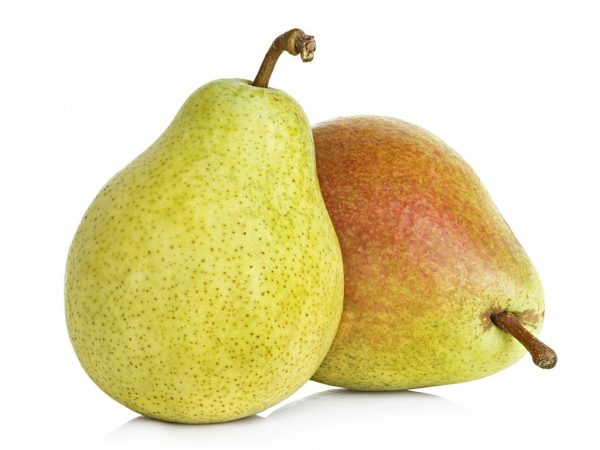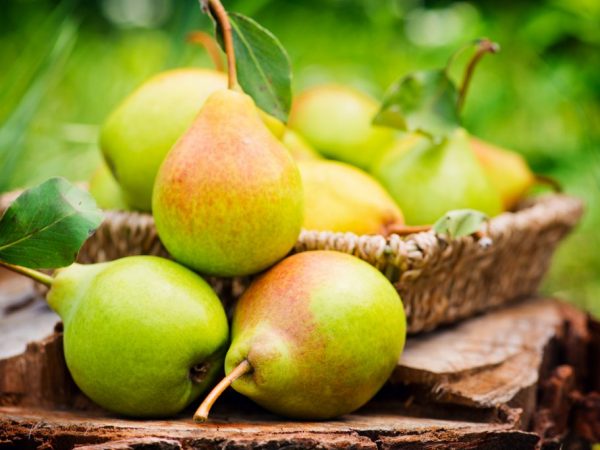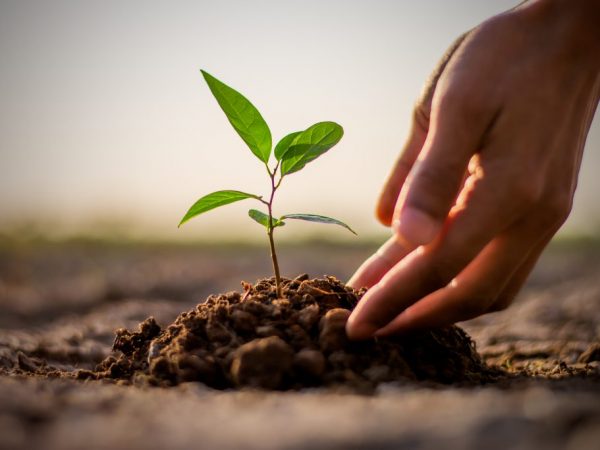Description of pear Lira
Pear Lira belongs to the early winter species. The variety was developed for the Central region of the Russian Federation. Gardeners who have dealt with this crop note its high yield, large fruits and a fairly long shelf life.

Description of pear Lira
Variety characteristic
Particular attention should be paid to the pear during planting and in the first two years of life.
The harvest period lasts from early October to late December. The yield is regularly high. The fruits are not prone to scab. Fruiting with proper care (digging and grafting) occurs in the second year after planting.
Description of the plant
The description suggests that the Lira pear variety has brown shoots of unequal length. The trees grow very tall with a medium density pyramidal crown. The kidneys are bent, conical. Leaves are medium in size, with slight nerves.
Description of the fetus
The fruits are large enough with an average weight of about 200 grams. Outwardly attractive, the skin on the fruits is greenish; when ripe, it acquires a reddish tint. The surface is smooth, matte in appearance.
The pulp is creamy, firm, fine-grained and juicy. The taste is sweet, without sourness. The aroma is almost not felt. Fruits are stored for a long time - from a couple of weeks to several months. If the storage conditions are observed (moderate temperature and humidity), then the harvest harvested in the fall can be enjoyed in the spring, and not in canned or frozen form, but fresh.

Fruits are green, large, with an average weight of about 200 grams.
Landing
Choose a seedling carefully before planting. The seedling must be healthy, with a developed root system and not very thin shoots.
Pick-up location
The Lira pear variety loves the sun, so the planting site should be well-lit and sunny. And do not forget that even self-fertile trees (Lyra refers to such) give a much better result if there are pollinators of different varieties and flowering periods nearby. In addition, the minimum distance between a tree and any other trees and buildings is 3 m (preferably 5 m).
You can plant trees of this variety both in spring and autumn. The site should have a good irrigation system, but there should be no groundwater close to the surface. It is desirable that the planting site has loamy soil. If the soil is sandy, then the planting hole should be filled with 2 buckets of peat.
Planting rules
The hole must be at least 1 m deep and 80 cm in diameter. When planting in a hole, pour the nutrient mixture. It is a mixture of 1-2 buckets of humus, 50-100 grams of potassium salts, 100-150 grams of superphosphate, and one shovel of wood ash. When placing a seedling in a hole, be careful - its roots should be straightened evenly along the bottom. It is not worth tamping the ground after disembarkation, but you need to make sure that the root collar is above the ground.
Care
The variety is prone to self-formation, so special pruning (crown-forming) is not required.To ensure better fruiting, you can thin out the crown in the first years after planting. Sanitary pruning is carried out 2-3 times a season, but more often. Trees under 1 year old should be cut to a height of no more than 1 meter. You should also trim off the buds that are in the first half of the trunk.
Watering
The first watering should take at least 2 buckets of water, then watering should be done as needed (the ground around the tree should not dry out too much). After watering, the trunk circle must be loosened.
Weed control
Weeds in the first years of a tree's life around the trunk must be destroyed in a timely manner. After the tree begins to bear fruit, careful weed control can be replaced by mowing.

To get a good harvest of the Crimean Honey Pear, you must follow the rules of planting and care
Fertilizer
If the planting procedure was performed correctly, then 2-3 years after it, fertilizing the tree is not required. Further, for better growth and improved yield, organic fertilizers (compost, manure, humus) can be applied. Mineral fertilizers are recommended to be used for this variety only if the growth of your seedling has slowed down and does not meet the expected rate.
To improve the immunity of the tree, you can use the foliar feeding method. This is usually done in the spring, summer or fall.
- Spring feeding time is the period of pear blossoming. During this period, it is recommended to use urea, nitrate (30 gr. Per 1 sq. M. Diluted in water in a ratio of 1:50), carbide (80-120 gr. Per plant, dissolved in 5 l. Water) or even chicken droppings ... If you decide to fertilize after flowering, you can do it with nitroammophoska dissolved in water in a ratio of 1: 200.
- Summer feeding is carried out either at the end of June or in July. In the first case, you need to use nitrogen-containing fertilizers, and in the second, phosphorus and potassium. The July top dressing should be alternated with mineral fertilizer, this will provide the best effect.
- Autumn feeding provides the tree with a supply of nutrients for the whole winter, the poet is carried out several times. In the first half of September, fertilize with nitrogen or urea. This must be done before the end of September, when carrying out this procedure later, your trees risk dying during the winter cold. The second autumn top dressing is done a couple of weeks later with mineral fertilizers (potassium, superphosphate, etc.) You can also do this procedure with wood ash while digging a tree (ash is laid at a depth of 10 cm from the surface around the tree trunk).
Disease and pest control
Lyra is resistant to scab, but is susceptible to diseases such as fruit rot, rust, and fire blight. Treatment of the trunk and branches with a 10% urea solution in spring and autumn will be a prophylaxis against all these misfortunes. You can also use the drugs Delan, Skor or their analogues according to their instructions.
Any insecticide can be used against various insect pests, but not during harvesting. Cleansing the trunk of old bark, as well as moss and lichens will be a good prevention from this kind of trouble. After this procedure, the cleansing of the place should be whitened with a solution of lime, clay and ferrous sulfate (mullein can be used instead of vitriol).
Conclusion
Pear Lira is an excellent variety of medium winter hardiness. Novice gardeners will also be able to cope with the cultivation. By adhering to the care recommendations, you can get a generous and healthy harvest of sweet pears.


